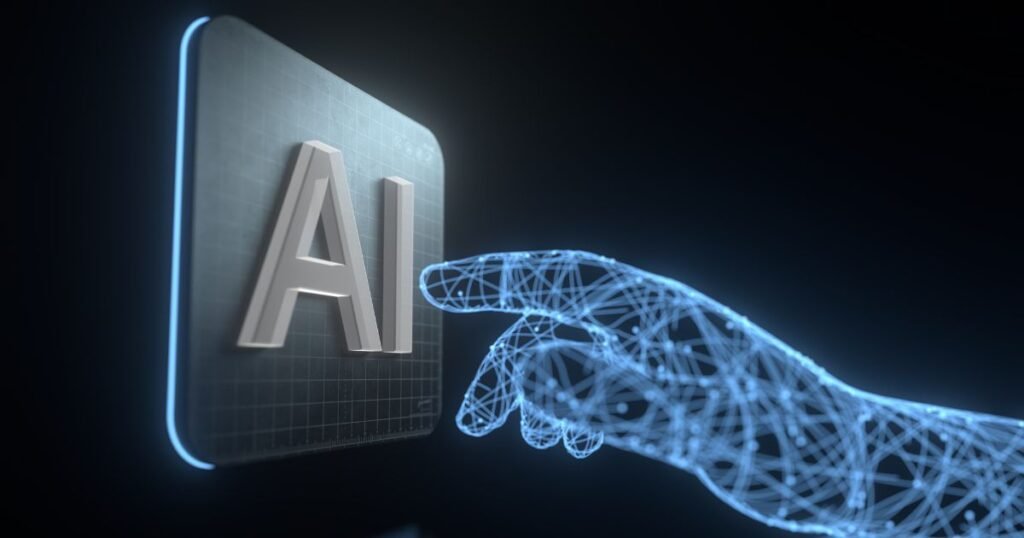Artificial intelligence (AI) refers to computer systems that can perform tasks that typically require human intelligence, such as visual perception, speech recognition, and decision-making.
The concept of AI has been around since the 1950s but has seen major advancements recently thanks to increased computing power, the availability of large datasets, and improvements in machine learning algorithms.
Artificial Intelligence technologies are being rapidly adopted across industries worldwide. From helping doctors diagnose diseases more accurately to enabling self-driving cars, AI is impacting our world in significant ways. This blog post will provide an overview of the current state of AI in 2024 and how it is transforming various technology sectors.
What Is Artificial Intelligence?
At its most basic level, Artificial Intelligence allows machines to learn from experience, adjust actions accordingly, and perform human-like tasks. Within the umbrella of AI exist many different techniques and technologies, such as machine learning, neural networks, natural language processing (NLP), robotics, and predictive analytics.
AI can be classified into three main categories based on its capabilities:
1. Narrow AI: Also referred to as weak AI, this type focuses on single, narrow tasks like playing chess, language translation, self-driving vehicles, chatbots, etc. Most current Artificial Intelligence applications fall into this category.
2. General AI – Also known as human-level AI, this kind possesses generalised human cognitive abilities and can master multiple domains just like humans. Currently, it remains aspirational.
3. Superintelligent AI – This hypothetical AI surpasses human intelligence and cognitive abilities. Still largely conceptual at this point.
The most common subset of Artificial Intelligence is machine learning, which uses statistical techniques to give computer systems the ability to “learn” with data without being explicitly programmed. Neural networks are computing systems that learn from large amounts of data modelled on the human brain’s network of neurons. Meanwhile, natural language processing (NLP) focuses on interactions between computers and human languages.
Advancements across all these technologies are contributing to more capable and smarter Artificial Intelligence systems coming online each year.
AI Current State and Advances in 2024

Artificial Intelligence systems will be deeply integrated into business and consumer technology applications. They are assisting doctors with diagnosing diseases, helping lawyers with legal research, supporting customer service through chatbots, optimizing supply chains, and personalizing content recommendations (e.g., Netflix).
Some major recent advances in AI include:
- Development of advanced computer vision systems that can categorize images and detect objects more accurately than humans.
- Natural language processing saw major improvements in 2022–2023, enabling more conversational chatbots and document summarization tools.
- Robotics and drone technology have become more intelligent with self-navigation capabilities in complex environments.
- Generative Artificial Intelligence models like DALL-E 3 and GPT-4 demonstrated new capabilities in image generation and natural language generation.
- Increased adoption of AI on the edge for applications like self-driving cars, augmented reality (AR), and IoT devices. This allows AI processing to happen locally without relying on the cloud.
- Quantum machine learning research began showing promise for developing AI algorithms that can leverage quantum computing for exponential speedups.
Overall, Artificial Intelligence capabilities are accelerating rapidly thanks to better algorithms, new architectures like transformers, more training data, and increased compute power with chips customized for ML workloads.
Impact of AI in Various Industries
AI in Healthcare
Artificial Intelligence is transforming healthcare by improving patient outcomes and saving lives. By analyzing large volumes of imaging data and medical records, AI can help with earlier disease detection, personalized treatment plans, and predicting complications.
Areas seeing major Artificial Intelligence adoption include robotic surgery, virtual nursing assistants, medical image analysis, precision medicine, and automated medical coding. It is estimated that AI could result in $150 billion in annual savings for the US healthcare economy by 2026.
AI in Finance
AI is being deployed in banking, insurance, wealth management, and stock trading activities. Use cases include detecting fraud in payments, analysing consumer behaviour for financial advisory, automating processes for loans and claims, and high-frequency stock trading.
According to reports, over 90% of large banks are actively implementing AI solutions. The technology is enabling finance firms to mitigate risk, reduce costs, uncover revenue opportunities, and improve the customer experience.
AI in Manufacturing
Smart manufacturing leveraging AI, IoT sensors, and advanced analytics is driving the 4th industrial revolution. Artificial Intelligence techniques like predictive maintenance can anticipate equipment failures and reduce downtime. Meanwhile, computer vision enables automated quality control via image recognition.
Supply chain operations are also being enhanced with AI through production planning and scheduling, logistics optimisation, and anticipating spare part needs. Over 50% of manufacturers are planning significant Artificial Intelligence investments by 2024. The technology is critical for achieving smart factories in the future.
AI in Transportation
One of the most visible AI applications has been self-driving car technology. Major advances were made in mapping and navigation algorithms, enabling autonomous taxis and long-haul trucks. However, widespread adoption still faces regulatory hurdles.
AI is also helping optimize traffic patterns in smart cities and enabling computer vision capabilities in driver assistance systems for accident prevention. According to a McKinsey study, AI could contribute $2.6 trillion in total economic impact for the automotive and mobility sectors by 2030.
AI in Retail
Retailers like Amazon and Walmart are using AI to understand micro-customer preferences and deliver ultra-personalized recommendations and shopping experiences. AI also empowers merchandisers to optimize pricing in real-time.
Behind the scenes, Artificial Intelligence helps retailers with demand forecasting, supply chain analytics, automated warehouse robots, cashier-less stores, and predictive inventory management. The technology is crucial for retailers to stay competitive and maximize sales in the 21st century.
Ethical Considerations and Challenges in Artificial Intelligence
While rapid AI advancements are delivering many societal benefits, the disruptive technology also raises some ethical dilemmas and challenges that require deliberation.
AI Bias: Like humans, Artificial Intelligence systems can perpetuate unintended bias if the algorithms are trained on biased datasets. However, researchers are proactively developing techniques to audit AI models for bias and ensure fair outcomes.
Privacy Concerns: The ability to collect and analyze large consumer datasets is enabling more personalized AI applications but also increasing privacy risks. Governments are still playing catch-up in passing data protection regulations.
AI Surveillance: The increased use of facial recognition for law enforcement and surveillance is sparking a debate around civil liberties and consent. The EU recently proposed a partial ban on technology in public spaces.
Job Displacement: Though most experts believe Artificial Intelligence will not replace humans but rather augment them, the technology may significantly disrupt certain jobs, leading to temporary job losses. Proactive policy changes around retraining and income support programs are required to smooth the transition period.
Overall, technology leaders agree that AI needs to be developed and deployed responsibly through self-regulation. Industry associations have created best practices around transparency, fairness, and accountability to mitigate ethical AI risks.
AI and the Future of Work
The World Economic Forum predicts that 97 million new AI/robotics-related roles may emerge across 15 industries by 2025. These include AI specialists, machine learning engineers, roboticists, data analysts, automation experts, etc. At the same time, 75 million traditional jobs are expected to be displaced.
Education systems need to rapidly adapt by updating school curricula and university degrees to develop AI-ready talent. Governments also need workforce development programs to reskill employees whose jobs become redundant. Lifelong learning will become essential for everyone to stay employable.
Overall, AI is poised to augment rather than replace human jobs. Workers who can effectively collaborate with AI tools will have the most in-demand skills. Business leaders agree that uniquely human strengths like creativity, innovation, empathy, collaboration, and strategy development will become more crucial for economic value creation.
Government Policies and AI Regulation
The rapid pace of AI innovation has governments playing catch-up in terms of regulating the technology and mitigating risks. As of 2024, more than 50 countries have released national AI strategies to foster innovation in space responsibly.
The US passed the AI Initiative Act in 2022, which mandated new AI safety standards and dedicated over $4 billion in AI funding. The EU aims to become a global AI powerhouse through its Trustworthy AI Act, which harmonizes rules around transparency and human oversight.
China recently overtook the US in AI research output and aims to be the world leader by 2030 through targeted policies and subsidies. Overall, international cooperation frameworks are still in early stages but critical for standardizing safety norms and preventing unfair advantages.
Future Trends and Predictions About AI
According to the widely cited AI Index Report, the volume of AI research papers grew by over 300% in the 2010–2022 period, indicating incredible momentum in the field. Venture capital funding for AI startups also exploded, crossing $93.5 billion in 2023.
Some promising areas that may witness AI breakthroughs include quantum machine learning, AI for materials discovery, personalized genomics, AI for cyberdefense, autonomous space robots, natural language interfaces like ChatGPT, and AI for climate modeling, among many others.
Geopolitical rivalries and “AI arms race” narratives may also intensify by the end of the decade, raising complex policy questions for global stability. However, international cooperation and responsible development focused on prosperity and sustainability remain the optimal paths forward.
Conclusion
AI is undoubtedly one of the most transformative technologies of the 21st century, with the potential to profoundly impact businesses, economies, and society this decade.
From delivering healthcare access worldwide to mitigating climate change, AI solutions centered on the greater good can uplift humanity.
However, conscientious steps are required to address ethical dilemmas and focus AI progress on empowering humans through augmentation rather than displacement. Overall, the responsible development of AI through institutional self-regulation and public-private partnerships appears to be the best strategy for realizing the grand possibilities.









